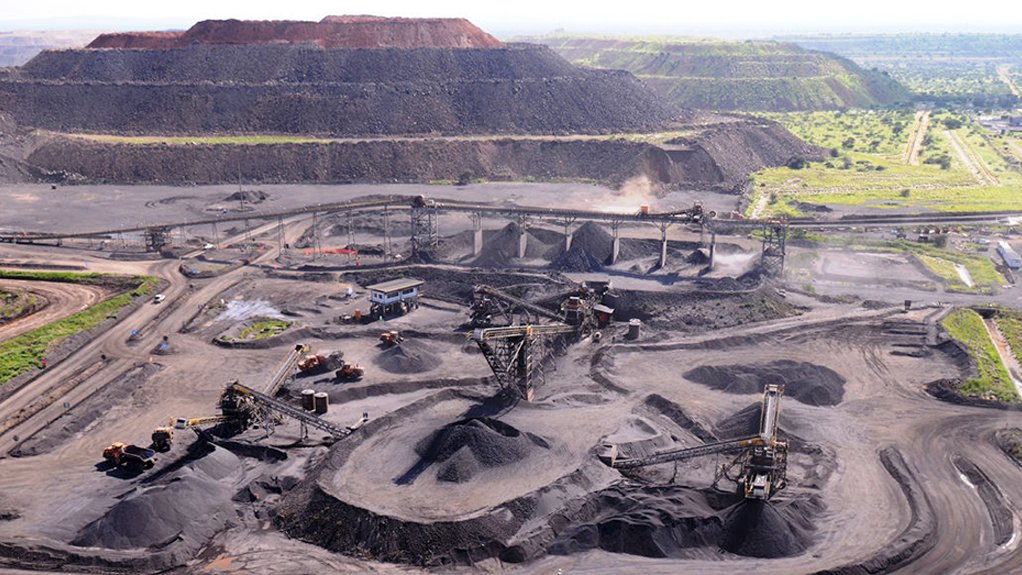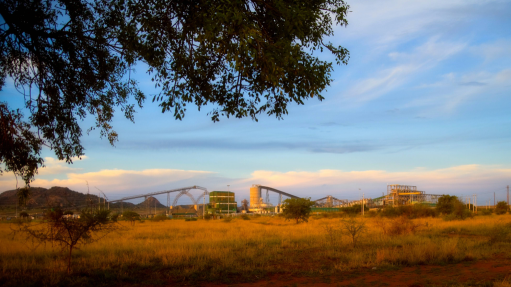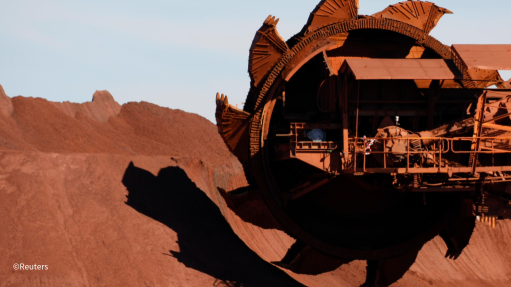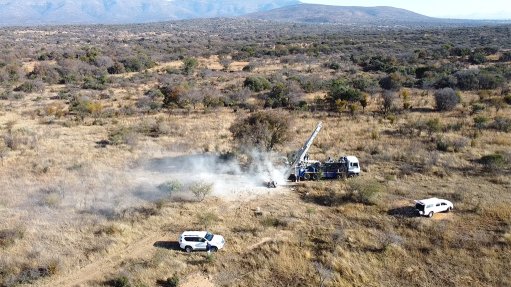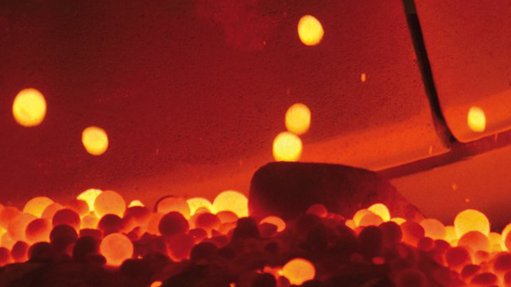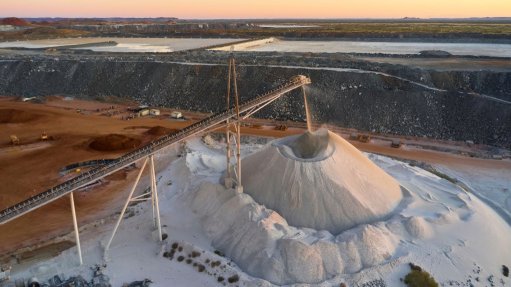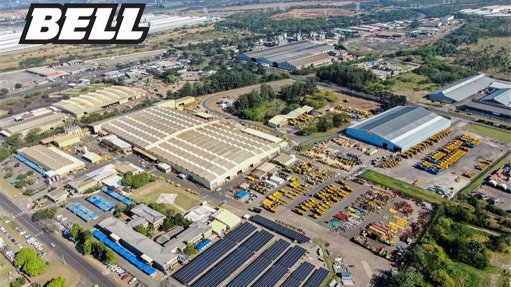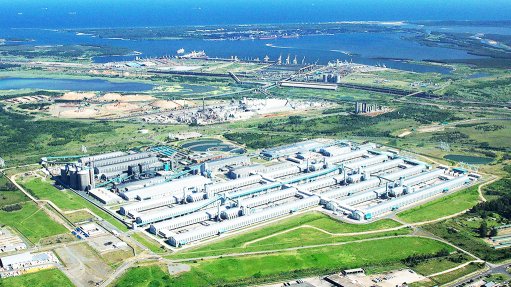Jupiter on track to meet full-year guidance as Tshipi mine delivers good first-quarter results
ASX-listed Jupiter Mines has reported that the Tshipi manganese mine, in South Africa, has delivered another reliable set of results for the quarter ended September 30, with sales of 837 577 t and production of 829 798 t.
In its quarterly activities report for the first quarter of its 2026 financial year, Jupiter says both sales and production are on track to meet the full-year target of 3.4-million tonnes.
Jupiter holds a 49.9% interest in the Tshipi mine through its wholly-owned Jupiter Kalahari subsidiary.
The company notes that Tshipi continued to generate value through cash generation, increasing cash on hand to A$140-million during the quarter.
The cost of production decreased by 4% to $2.27 per dry metric ton unit (dmtu) on a free-on-board (FOB) basis, driven by higher volumes of graded ore mining and production volumes, alongside ongoing cost control initiatives.
Jupiter says this result is particularly noteworthy given the strengthening of the rand against the dollar during the quarter, which presents a headwind for dollar-reported operating costs.
The company notes that this increase in cash was particularly commendable given that Tshipi declared and paid a final dividend of R300-million to its shareholders for the 2025 financial year during the quarter under review.
Additionally, the company says no lost-time injuries were recorded during the quarter. The total recordable injury frequency rate (TRIFR) increased to 0.44 from 0.38 in the previous quarter, owing to two minor injuries requiring medical treatment.
Tshipi recorded earnings before interest, taxes, depreciation and amortisation (Ebitda) of A$26.6-million and a net profit after tax (NPAT) of A$17.8-million for the quarter, down from Ebitda of A$40.9-million and NPAT of A$25.9-million in the previous quarter.
Jupiter says this reflects lower sales volumes and the product mix sold in the quarter, noting that the prior quarter benefitted from higher-than-average sales volumes for that time of year.
MANGANESE MARKET
Meanwhile, the company explains that seaborne manganese ore prices for semi-carbonate ore strengthened during the September quarter owing to a stabilisation of global supply of manganese and strong Chinese alloy production.
The company notes that port stockpiles in China were stable during the quarter, notwithstanding the return of steady volumes from the majority-owned South32 manganese operation at the Groote Eylandt mine, in Australia.
Strong consumption from Chinese alloy plants has absorbed the increase in manganese exports.
Jupiter says Chinese stockpiles, at 4.4-million tonnes, remain well below the historical five-year average of 5.8-million tonnes, representing less than two months of manganese consumption at quarter-end.
Additionally, it notes that crude steel production, as reported by the World Steel Association (worldsteel), has continued to face headwinds throughout this calendar year.
This is particularly notable for China, where production has generally shown a declining trend through most of the calendar year.
The reduction in global steel production in developed countries has largely been offset by strong growth in India, which has been driven by railway infrastructure, urbanisation and renewable-energy projects, says Jupiter.
The company notes that, globally, most countries continue to be adversely impacted by geopolitical tensions, trade disruptions and broader macroeconomic factors affecting the steel industry and associated commodities.
It adds that worldsteel’s recent ‘Short Range Outlook’ projects global steel demand to remain flat this year, increasing by 1.3% in 2026, driven by resilient global economic conditions, continued strength in infrastructure investment and easing financial conditions.
As anticipated, Jupiter says crude steel production in China is forecast to decline in both 2025 and 2026 owing to the ongoing slump in the Chinese property market.
Additional downside risks include the global trade environment and continued financial pressure on local governments in China.
Post quarter-end, Jupiter says, manganese ore prices have remained stable owing to an absence of material changes in supply and demand factors.
Article Enquiry
Email Article
Save Article
Feedback
To advertise email advertising@creamermedia.co.za or click here
Press Office
Announcements
What's On
Subscribe to improve your user experience...
Option 1 (equivalent of R125 a month):
Receive a weekly copy of Creamer Media's Engineering News & Mining Weekly magazine
(print copy for those in South Africa and e-magazine for those outside of South Africa)
Receive daily email newsletters
Access to full search results
Access archive of magazine back copies
Access to Projects in Progress
Access to ONE Research Report of your choice in PDF format
Option 2 (equivalent of R375 a month):
All benefits from Option 1
PLUS
Access to Creamer Media's Research Channel Africa for ALL Research Reports, in PDF format, on various industrial and mining sectors
including Electricity; Water; Energy Transition; Hydrogen; Roads, Rail and Ports; Coal; Gold; Platinum; Battery Metals; etc.
Already a subscriber?
Forgotten your password?
Receive weekly copy of Creamer Media's Engineering News & Mining Weekly magazine (print copy for those in South Africa and e-magazine for those outside of South Africa)
➕
Recieve daily email newsletters
➕
Access to full search results
➕
Access archive of magazine back copies
➕
Access to Projects in Progress
➕
Access to ONE Research Report of your choice in PDF format
RESEARCH CHANNEL AFRICA
R4500 (equivalent of R375 a month)
SUBSCRIBEAll benefits from Option 1
➕
Access to Creamer Media's Research Channel Africa for ALL Research Reports on various industrial and mining sectors, in PDF format, including on:
Electricity
➕
Water
➕
Energy Transition
➕
Hydrogen
➕
Roads, Rail and Ports
➕
Coal
➕
Gold
➕
Platinum
➕
Battery Metals
➕
etc.
Receive all benefits from Option 1 or Option 2 delivered to numerous people at your company
➕
Multiple User names and Passwords for simultaneous log-ins
➕
Intranet integration access to all in your organisation



